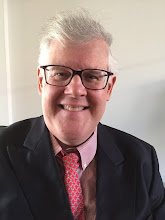Slab of the Berlin Wall at the United Nations, NY
Berlin Wall Tumbles
After Joshua Trumpet Sounds
A quarter century ago, the Joshua trumpet of
freedom sounded and the Berlin Wall came tumbling down. Naturally, this allegory was slightly more
complicated as the epic political events which led to the fall of the Wall on 9
November 1989 were long in coming but nonetheless still not at all anticipated.
The year 1989 represented an extraordinary epoch for human freedom
both in aspiration and in fruition.
Starting in the Spring with Tiananmen Square in China, mass protests
against regime corruption soon morphed into a swell of protest against the
ruling communist party. But the brutal crackdown in Beijing soon sent
the political reverberations across the vast land mass of Russia and into
Eastern Europe.
By Autumn these political shock waves had reached Hungary
where the ruling communists allowed for the opening of a breech in the Iron
Curtain dividing the two systems. East
German tourists were allowed to exit through Hungary en route to Austria and
West Germany.
Before long, massive demonstrations in East Germany during
the Fall, largely organized through the Lutheran churches in Leipzig, combined
with a hesitation by Mikhail Gorbachev’s reformist Soviet Union to militarily intervene
and to defend the ruling communists, led to a political Tsunami throughout the
East Bloc by November. The Soviets
blinked.
Seeing Berlin the first time in the 1970’s through the
window of a Pan Am aircraft descending through the steel grey clouds one viewed
the Wall as a gash across the heart of the city.
Visiting the city offered the glaring contradictions of a
brash and prosperous West Berlin literally alongside the grey, sullen but still
historically significant East.
On the one hand, Berlin was a Cold War theme park, a tableau vivant of contrast and
coercion. On the other, the pathos of
division; divided families, separated
neighborhoods, and blocked streets brought the reality up close and
personal.
The Wall was erected by the ruling communists in August 1961.
Indeed, Berlin stood as a somber if
glaring reminder of the German capital’s
post-war division as well as the political fault line between the democratic
West and the communist East.
But for a long time Berlin slipped into a kind of political
Purgatory inside the larger struggle of the Cold War, “The most dangerous place
on earth,” as Soviet leader Nikita Khrushchev called it.
The divided city was vulnerable to coercion but also a
symbol of enduring freedom and prosperity.
For the East Germans, the Wall barred exit to liberty but more aptly
represented a suffocating cordon of their socialist society. For many who tried to escape the East, often
using the most ingenious methods, there was freedom in the West. For others, over 138 people, they were shot
and killed trying to flee the workers paradise.
Repression by East Germany’s regime was legendary; see the truly
amazing film The Lives of Others for
a serious and jarring look into both the spying and psychological repression of
what was called the “socialist State on German soil.” Today the former DDR is remembered for the polluting
Trabant autos, the Stasi secret police, and a still-lingering psychological
separation between former West and East Germany.
There are of course the poignant memories at the Brandenburg
Gate; John F. Kennedy’s iconic 1963
speech. “Ich bin ein Berliner!” or President Ronald’s Reagan’s memorable
clarion call, “Mr. Gorbachev, Tear Down This Wall!”
Yet until its reunification in 1990, Germany remained a
divided nation.
Names like Ronald Reagan, Helmut Kohl, Mikhail Gorbachev and
significantly Pope John Paul II played an extraordinary role in these epoch
events which would sweep through Eastern Europe, see the collapse of the Berlin
Wall, and lead to the singular achievement of German re-unification a year
later in peace and freedom.
Fast forward to 2014; Berlin united, prosperous, and free. What
happened to the Wall, its 87 miles of concrete slabs? Most of the barrier has been torn down and
simply disappeared, slabs are in Parks around the world, but the haunting
memories linger.
***************
East Germany's last Communist leader; Erich Honecker
From an art exhibit at the German Consulate, NY






